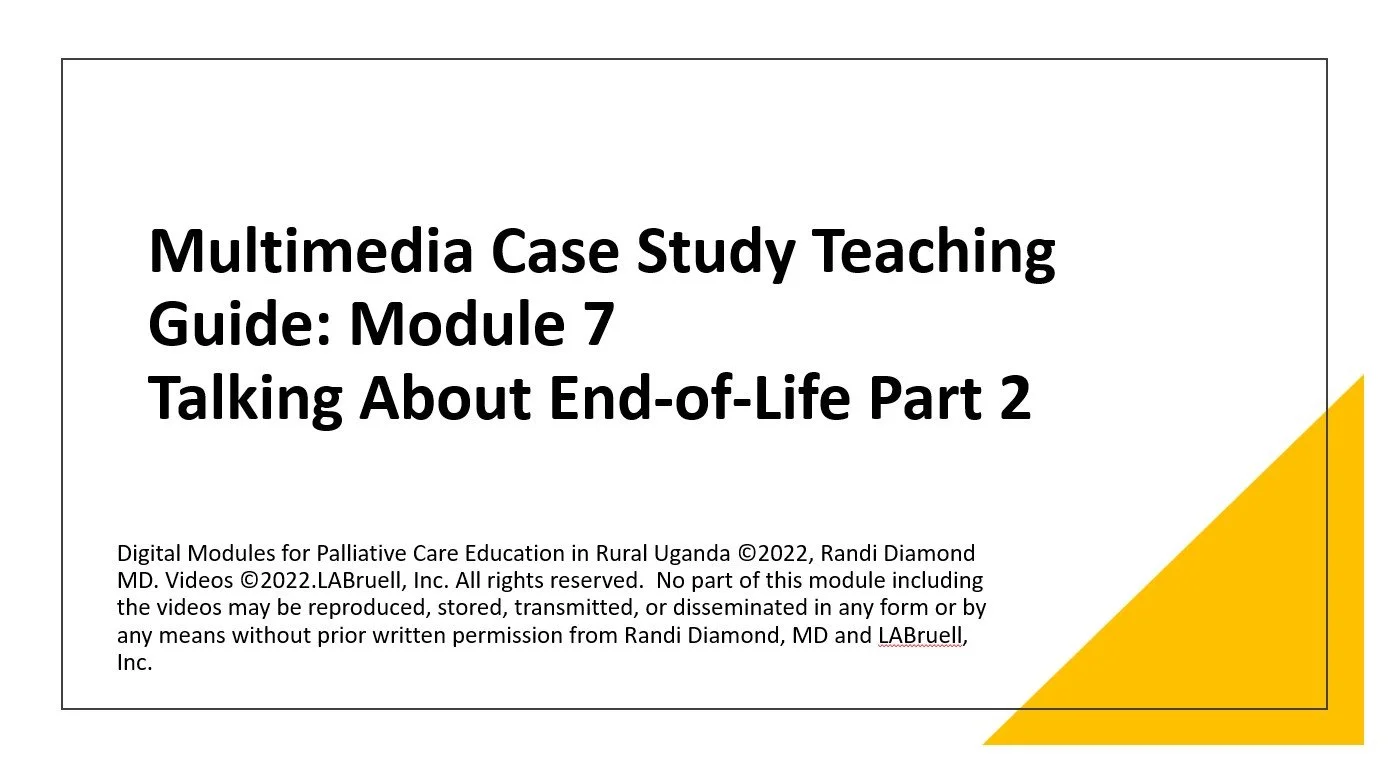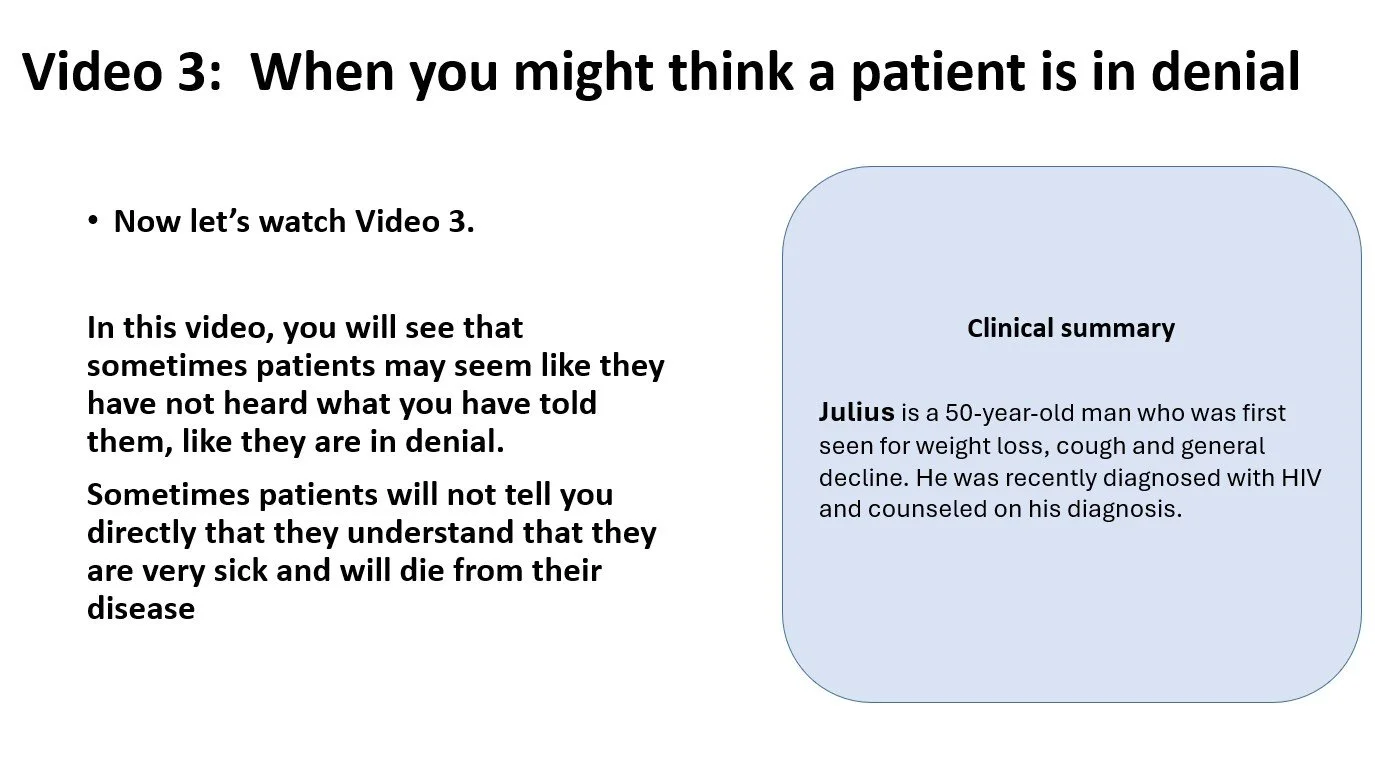Video Based Educational Tools
Video Based Modules for Education in Palliative Care Communication
Motivated by unpublished data from APCA showing gaps in knowledge and skill of health workers in palliative care communication, by medical literature supporting the need for improved communication and communication training in Africa and by our own clinical experience with rural Ugandan patients who hope for better communication with their health care providers, we created video-based educational modules intended to help healthcare workers learn and improve their palliative care communication skills.
These modules have embedded videos of unscripted real-life patient encounters in rural Uganda and are on PowerPoints which include teaching points related to each video, and prompts for learners to reflect on their own practices and how they might improve their patient interactions.
The topics covered in the 7 modules include:
-What is Palliative Care
-Basic Communication Skills
-Delivering Bad News- Parts 1 and 2
-Thorough Pain Assessment (including how to elicit a clearer understanding of the patient’s pain and convey better pain management instructions)
-Talking About End-of-Life Parts 1 and 2.
Although they may be used for independent learning, these modules are best used by a group of learners who can discuss their thoughts and reflections together either in person or virtually. .
Videos for Patients and Caregivers
It all began in 2021 when we were called to see a young man with advanced cancer who was undergoing chemotherapy at the government cancer institute. When we entered his small home, he was on a mattress on the floor, writhing and crying in pain. His father, face grimacing with helplessness, desperately told us that this had been going on for days. When we asked the father what the doctors had told them about the boy’s illness and medications, he shrugged and said the doctors don’t have time to talk to them and instead handed them a booklet titled, “Coping with Cancer” and sent them on their way.
“But we can’t read,” Dan’s father said.
We got to working on Dan’s pain and nausea and as we waited for the medications to start working, we sat with him and his father explaining about his cancer, what to expect from the treatment and the disease. Within the hour he was much more comfortable.
On the hour long drive back from their home, we were angry and frustrated with the lack of communication between doctors and patients, leaving them without knowledge to address the symptoms of the cancer and side effects of the treatments. Having seen this over and over again during our years of seeing patients, it was on that ride back we decided we needed to produce videos to instruct patients and their caregivers on what they are going through, what to expect, and how to deal with the symptoms that often accompany cancer and it’s treatments.
Five years later, the first video is now available in English, Luganda, French, Swahili, Luo, Arabic, and sign language with plans to translate into several more languages and produce videos on several other topics as we get funding.
In the next few months we plan to provide these videos free of charge to village health teams and healthcare workers using a link that will be here.
Check back soon to learn how to access these videos and learning modules.
We are in the process of setting up a link.
To learn more about our educational programs, click here:



